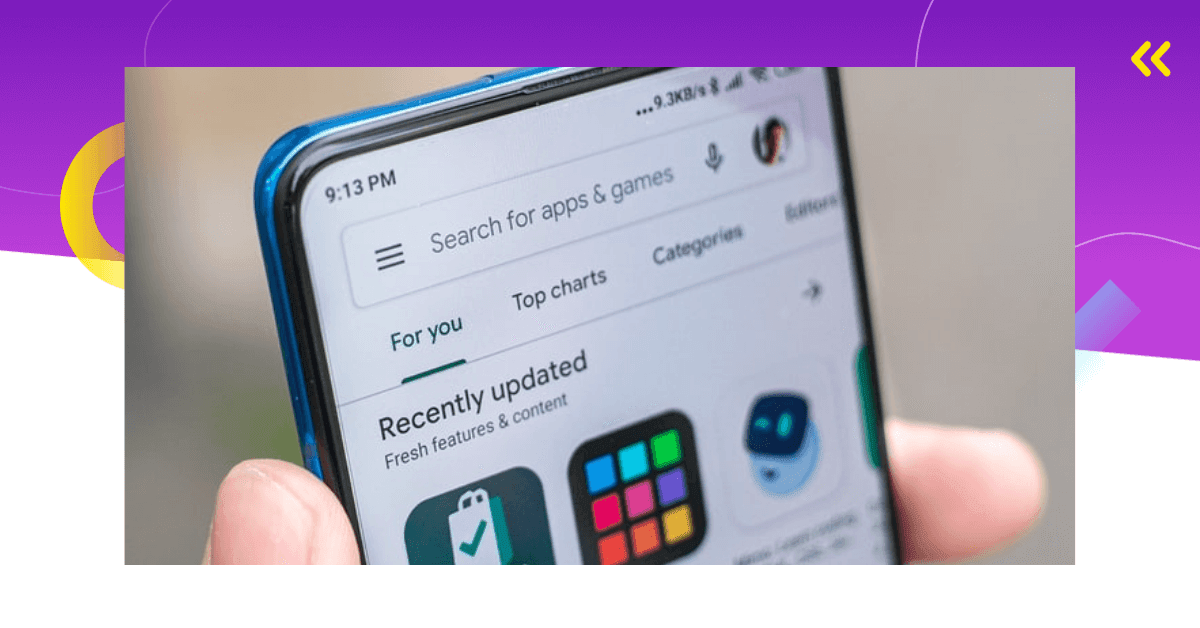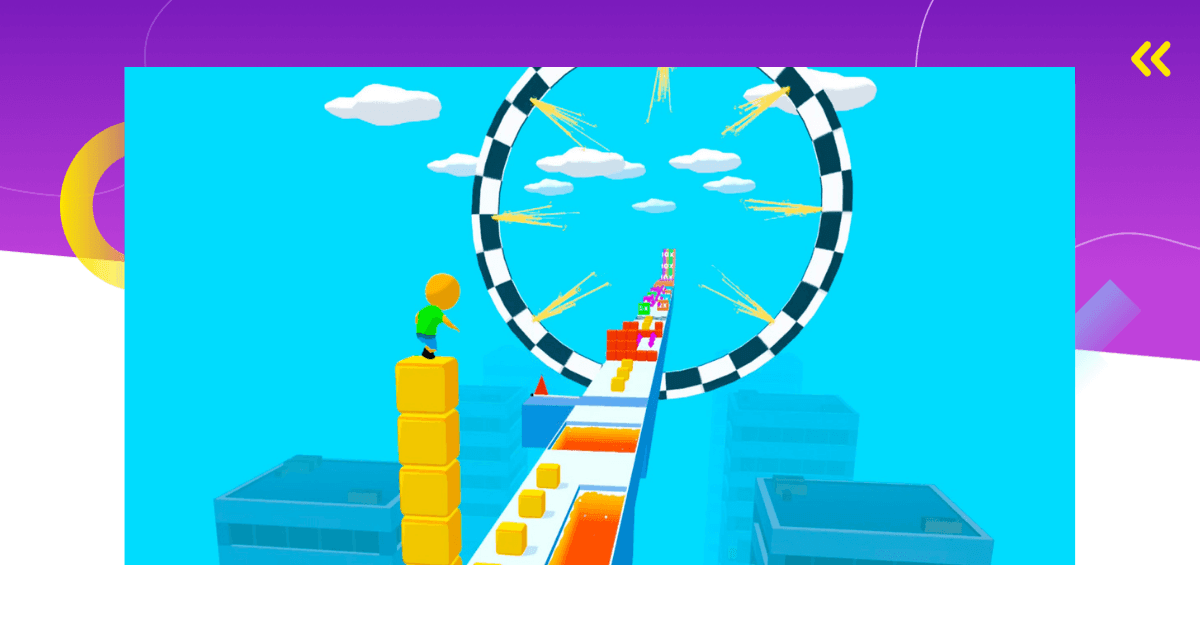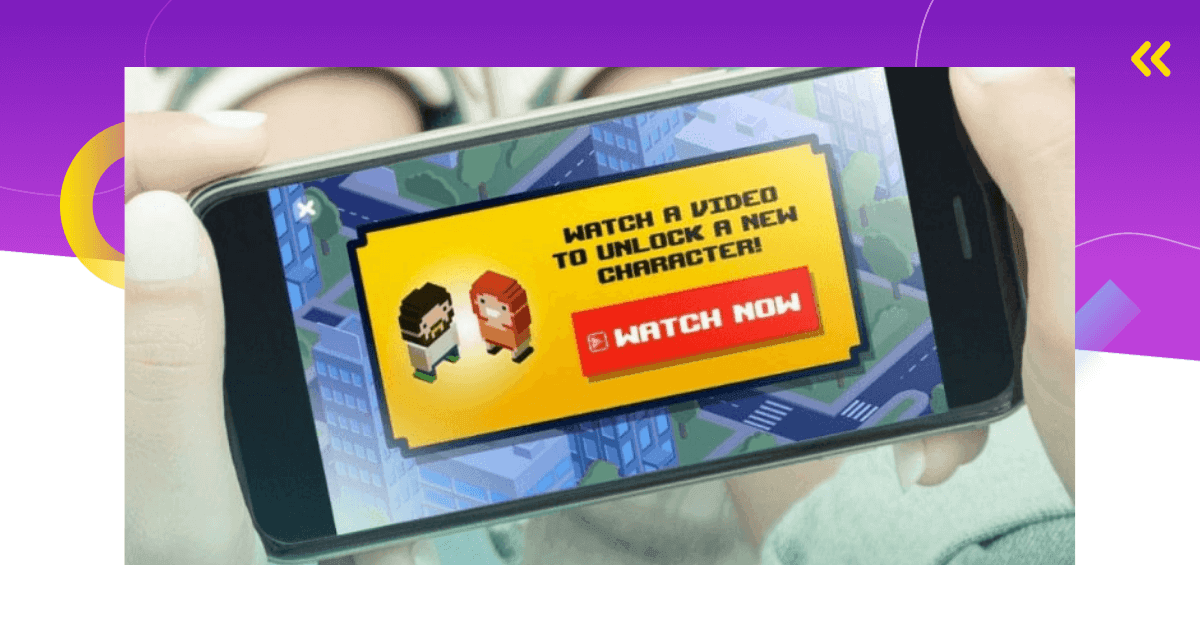In-app ads can be your game’s best friend or its worst nightmare. It’s well known that they can jeopardize the in-game user experience. For this reason, you have a tough job of finding the balance between user-friendliness and profits. To help you with that, we bring you a list of common in-app advertising mistakes.
Let’s dive right in!

1. Not Testing Ad Frequency
How many times have you seen “too many ads” reviews across the app stores?
I’ve seen them a million times. Sometimes I see these reviews and give up on installing a game.
And a lot of other users do the same.
The main ad type players are talking about are frequent interstitial ads. They are not opt-in and take over a player’s whole screen. For this reason, players can perceive them as disruptive and annoying.
However, ad frequency includes all other ad formats you are displaying in your game. This includes rewarded video ads, banners, and offerwalls.
For example, the optimal number of ads in hyper-casual games is 2-3 per minute (Adjust and Unity). If hyper-casual games are displaying 3 interstitial ads in a minute, plus banner ads, this is probably too much.
While it’s pretty hard to go overboard with rewarded video ads, interstitials are especially tricky.
According to Google, there should be at least two player actions between displaying interstitial ads. It is also recommended not to show them between every single level/stage.
Recommendations are one thing, but the only way to find out what’s best for you is to test ad frequency. Then, watch how your players behave. Track metrics like user retention, session lengths, ads per player, and CTRs.
Once you have enough data in place, compare results and act on them. Perhaps you will find out that your interstitial ad placements are causing players to churn on day one. Or maybe you’ll learn that you should limit the number of ads a player sees in a day.
You’ll never know until you start testing.

2. Putting All Your Players into the Same Basket
One of the biggest mistakes in game monetization is treating all your players equally.
If you thought this only applies to games with in-app purchases, think again.
You can do better than displaying random ads to random players. Your players are wildly different, and you should use this to your advantage.
In order to get the most out of them, you need to segment your players. Here are some of the ways you can do that:
- Spenders and non-spenders
- Active and passive players
- New and returning players
- Rewarded video ad viewers and nonviewers
Some types of games should pay special attention to segmenting. These are the games with longer player LTVs or those that have more than one revenue stream.
On the other hand, if hyper-casual publishers don’t segment, they are not losing that much.
All in all, segmenting players brings you valuable information about who your players are. Only when you know this will you be able to approach them in the right way.

3. Displaying All Ads to Spenders
Okay, so you’ve decided to monetize your game with both ads and in-app purchases.
Probably a good call for your game’s monetization.
However, this means you have to be extra careful with displaying in-app ads. You can’t treat them the same way you treat non-payers. If you do, there is a fair chance you will annoy them to the point of churning.
Here’s what you can do to avoid this.
There are players who have already spent money on your game. You can split these players into a few groups, for example:
- regular spenders
- occasional spenders
- one-time spenders
Regular spenders shouldn’t see any type of in-app ads. If they do, this can negatively affect their spending and in-app lifetime.
For occasional spenders, decrease frequency. Also, avoid displaying full-screen ads that are not opt-in (interstitials). It’s a better call to serve opt-in ads like rewarded video.
One-time spenders are tricky. If they have recently made their first IAP, spoil them for a while. Don’t serve them ads or only show them opt-in ads. If it’s been a while since their first purchase, you should continue serving ads.
Why all of this?
You’re hitting players with two monetization strategies at the same time. For this reason, you have to be careful not to come across as too aggressive. The last thing you want to do is make your players feel like cash cows.

4. Not Paying Attention to Other Ad Formats
If your game serves more than one type of ad, this means you have more in-app advertising mistakes to look out for.
For example, there are a lot of games that display rewarded video ads and interstitial ads.
And even though some players watch tons of rewarded video ads, they still constantly get interstitials. This can be frustrating, and it can ruin your game’s user experience.
The thing is, these players are already voluntarily engaging with an additional ad format. They are already bringing you revenue.
Hence, don’t think of it as losing a chunk of revenue.
If you value their user experience, they will reward you by playing the game for a longer time. In the long run, you win. These players will bring you more revenue than those who churned early because of too many ads.
On the other hand, full-screen ads should aim for players that bring the smallest amounts of revenue.
Some of your players won’t regularly watch rewarded video ads. You can serve them both, but watch out for placements.
For example, never show an interstitial right after a rewarded video ad. After watching an ad, players want to claim their reward and go back to playing. If they get another ad instead, this might feel like a punishment.

5. Displaying Ads in Unpredictable Placements
Imagine launching a game and getting ready to hit “start”. But before you even get there, an ad appears.
Not exactly a nice surprise, right?
This is because the ad appeared in an unpredictable placement. When this happens, ads get in the way of the gameplay experience. As such, they can become a retention issue. This is also one of the costliest in-app advertising mistakes.
Players are not unreasonable. They know you need to earn some money, and they expect to see ads in the game.
However, they expect to see them in certain placements. For this reason, a sudden, unexpected ad launch can upset them.
If they are about to reach the main menu, they don’t expect an interruption. Never show an ad before the players hit the “start” button”. If you really want to display it before gameplay, make it after they tap “start”.
It’s also a mistake to show them when players are about to exit the game. This can lead to accidental clicks. Plus, it really doesn’t make the user experience look good.
Players expect to see ads after they complete actions. For instance, after they just finish a level/stage, or after they are about to proceed to the next one.

6. Wrong Place, Wrong Time
Bad ad placements are one of the most expensive in-app advertising mistakes you can make.
It’s especially bad when developers choose the wrong placements for interstitial ads. If this is the case, ads can feel like gameplay interruptions.
They shouldn’t feel like this but like welcome breaks. The golden rule is to display them when a game naturally pauses – between levels or stages.
Besides this, there is another thing you may be neglecting – players’ emotions.
In order to understand this, put yourself in the players’ shoes.
You’ve just passed a difficult level and you’re happy about it. At this moment, you won’t mind seeing an interstitial ad. In fact, you will feel ready for it and could even use a break before the next level.
On the other hand, how would you feel if you just got defeated?
For a lot of players, an ad after a defeat can be a deal-breaker. They are already frustrated, and seeing an ad can frustrate them so much that they leave the game.
Of course, this does not apply to all players. Some will be okay with an ad and will just go and try again.
My point? Players are emotional creatures, and this plays a big role in retaining them. Consequently, this reflects game revenues as well.

7. Not Utilizing the Power of Rewarded Video
Only 15% of developers who display ads in their games don’t use rewarded video ads (eMarketer).
If you are a part of this percentage, you’re probably missing out.
Rewarded video ads have one special trait – they fit with almost all types of games. They can be found in 85% of casual and hyper-casual games, and 76% of hardcore and mid-core games (DeltaDNA).
What is it about this ad format?
First and foremost, a lot of players like them. They like them because they are opt-in and because they give them direct benefits.
Another mistake developers make is not making rewarded video ads visible enough. For this reason, some players are unaware of them.
There are numerous rewarded video ad placements you can utilize. Some popular ones include:
- Ads in the in-game store
- Booster ads
- Daily reward multiplier
- End of the game multiplier
- Out of lives ads
Which should you use? It really depends on your game and its genre. Most games go and combine several ad placements. This way, they make their placements visible to as many players as possible.
8. Relying on a Single Ad Network
All ad networks want to assure you they are the best choice for your game.
However, don’t make the mistake of sticking to one ad network.
Think about this.
When you’re requesting ads from an ad network, some space will stay unfulfilled. This reflects on the amount they will pay you. If the space you wanted to be filled remains empty, that amount is obviously – zero.
According to DeltaDNA, one ad network is likely to provide a 25% fill rate. If your fill rate is this low, you’re missing out on potential earnings. For this reason, the fill rate needs to be as high as possible.
This is why you should use multiple ad networks.
The next thing you need to think about is how these networks will fill out your ad space. Some popular choices include:
- Waterfall system
- Unified auction
The waterfall system works just like water flowing down a cliff.
The ad inventory is going through a route from top to bottom. At the top, it aims for the highest eCPMs. If no ad network fulfills the request, it goes to the next one, and so on. To help you with this, you should use an ad mediation platform.
Some say that the unified auction model is replacing the waterfall system.
In this model, multiple demand sources gain access to the same ad inventory. They bid for the same ads in real-time, and whoever bids highest wins. The prices can go up quite a bit, which definitely benefits the publisher.

9. Displaying Irrelevant or Low-Quality Ads
All major ad networks offer supreme targeting options.
And despite that, so many games display ads that don’t interest their player base.
Generally, when displaying ads, it’s good to stick to your category. For example, someone who plays a home design game is hardly going to be interested in a first-person shooter.
Let’s say you have a casual game. Your players will be more responsive to ads from this category and genre.
Then again, this also includes your competitors. That’s the tricky part.
The thing is, you don’t want to display too many competitor ads. There is no exact rule for this, but you should display them less frequently than all other ads. Moreover, it’s best to place them when players are about to end their sessions.
Other things that can ruin the ad experience are slow loading times or low-quality ads. Even though they are not a part of your game, they are a part of the user experience. They have the ability to turn players away, so pay attention to this as well.

10. Being Too Careful
Yes, there is even such a thing as being too careful with in-app ads.
Some publishers are very aware that ads can drive players away. For this reason, they decide not to display ads until later in the game.
For some games, this can be a great idea. However, if your retention rates aren’t extraordinary, – it’s not.
The chances are, by the time you decide to display ads, a lot of players will churn for other reasons. This leaves you with a lot of missed opportunities.
You must be wondering, “When should I display the first ad in my game?”
I can’t give you the precise answer to this question. It depends on your game, retention rates, ad formats, and genre.
However, there are some best practices to stick to for each genre. Here are the best practices for interstitial ads.
Hyper-casual publishers should display interstitial ads as soon as possible. This is because their players tend to churn quickly. For this reason, they should start showing them ads from session 1.
If you’re a hyper-casual publisher, we recommend you display ads from level 2. This happens in a matter of minutes, but still gives players some space to enjoy pure gameplay.
In other genres, waiting can be a good thing. According to ironSource, casual, mid and hardcore publishers should wait for 1 to 2 weeks before displaying interstitial ads to their players.
The assumption is – players in these genres have longer LTVs, so there is more time to reach them. During this time, players get to play, while publishers can try other monetization strategies.
Nevertheless, most games that serve interstitials display them within the first 10 minutes (DeltaDNA).

11. Not Preventing Accidental Ad Clicks
Accidents happen.
This is not just a phrase, but it can also be a problem for your ad monetization strategy. These accidents happen with all ad formats – whether it’s rewarded video, banners, or interstitials.
When players click on ads they weren’t intending to, it leads them away from the game. If this happens a lot, it can result in a frustrating experience that might make them churn.
How do these accidents happen exactly?
Here are a few examples of in-app advertising mistakes that can lead to accidental clicks:
- Interstitials that appear so rapidly that players accidentally click them
- When players reject watching a rewarded video ad, and an interstitial ad suddenly appears
- Serving native banners over text or graphics in such a way that the ad is mistaken for game content
Developers place ads in such positions because they think they will trick players into making them money.
While this can work for a while, it’s a disaster in the long-term. Players will either end up feeling confused or deceived. And nobody likes to feel this way.
Ultimately, you want to bring advertisers high-quality traffic. They expect clicks from players who are actually interested in their products. Players that accidentally click on ads are definitely not it.
12. Not Tracking eCPMs
eCPM, or effective cost per mile, is an essential in-app advertising metric and KPI every developer should closely monitor and analyze. It tells you how much revenue you’ve earned for every 1,000 impressions displayed on your mobile game.
Not tracking this key metric is one of the biggest in-app advertising mistakes.
eCPM data helps you optimize things like ad placements and frequency, as well as measure the overall performance of your monetization strategy.
If your eCPM is high, that means the ads displayed in your game are performing well and you get paid more. Thus, the goal is to have high eCPMs.
eCPM Statistics for 2023
You might be wondering, what is a good eCPM?
That depends on many different factors including ad formats, geo-location, ad placements, ad networks, etc.
However, from Appodeal’s research, we know the average eCPMs for the past year for interstitial, banner, and rewarded ads across all regions (the US, Western Europe, Eastern Europe, the Middle East, Asia, and Latin America).
I’ll give you a taste.
The country with the highest eCPMs for rewarded ads was the United States – ($12.91 on Android and $13.18 on iOS).
When it comes to interstitial ads, these were the countries with highest eCPMs – the United States ($11.06 Android, $9.58 iOS), Canada ($8.64 Android, $7.21 iOS), Australia ($6.65 Android, $6.88 iOS), Denmark ($6.34 Android, $5.76 iOS), and Switzerland ($6.27 Android, $5.73 iOS).
Banner ads have lower eCPMs than rewarded and interstitial ads. They were the highest in the US – Android ($0.60) and iOS ($0.27)
If you want to take a deep dive into this data, head on over to our eCPMs report.
A Final Word on In-app Advertising Mistakes
Think about it – you have a great game and so much data on your players. Yet, if you do just one of these in-app advertising mistakes, it can all go down the drain.
Hopefully, this list helped you detect your in-app advertising mistakes and find the right solutions.
You could always use some tips and best practices for mobile games? Subscribe to our newsletter and stay updated!







Comments